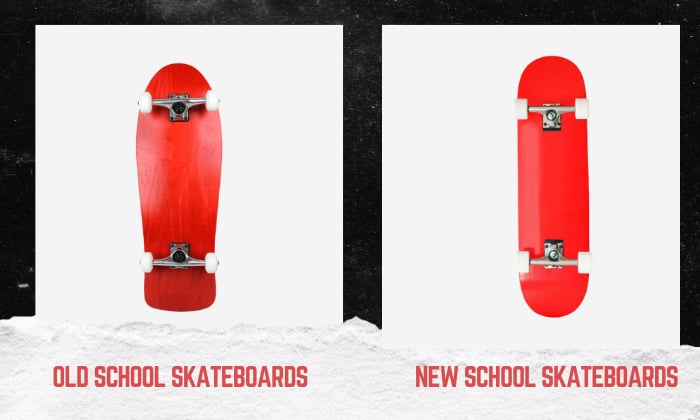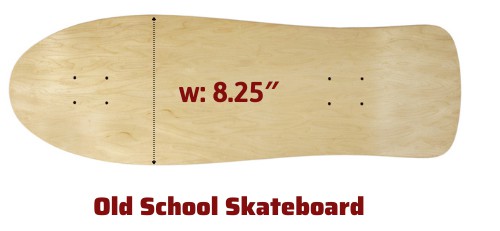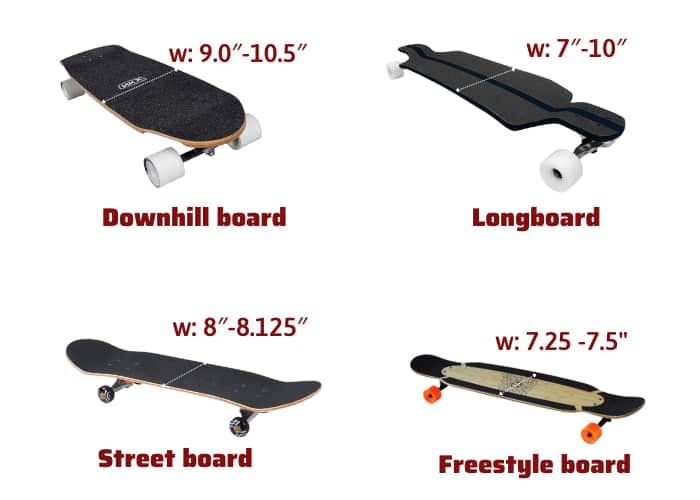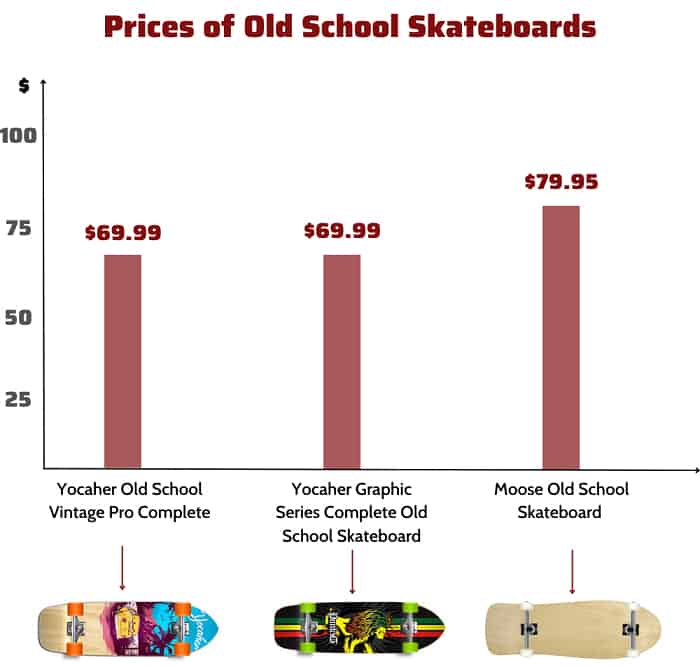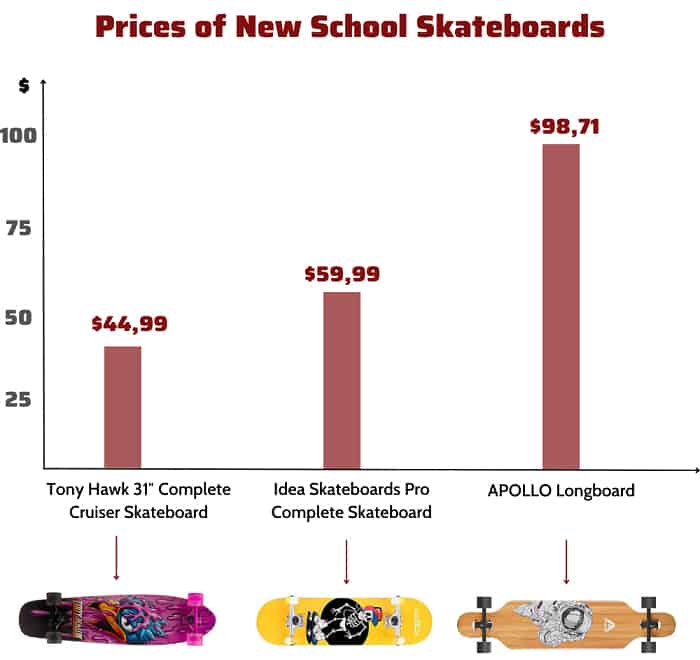Innovation is pivotal in almost everything, whether in sports, arts, or any passion. And like all these areas, skateboarding has evolved over time. Decades have passed, and millions of skateboards have undergone changes in technology and performance.
Let’s take old school VS new school skateboards as examples. Though they appeared at different times, one is just as valuable as the other.
Today, we will learn how these skateboards compare and what significant advantages each of them offer.
Table of Contents
Old School Skateboard Vs New School Skateboard: Defined
What are old school boards? How are modern skateboard trucks and wheels different from before? And how have decks changed over time? Let’s define these skateboards.
1. Old school
Just because we call them old doesn’t necessarily mean they’re sluggish or weird shaped skateboards. Old school skateboards from the 70s and 80s have their trademark in spacious decks. More specifically, these boards span at least 8.25 in width.
And considering what we know about broad decks, old school boards leave the impression of being stable.
In usage, old school skateboards take on the skate parks and streets. Or, if not in these places, other skaters take these boards for cruising.
2. New school
Creators of the new generation of skateboards focused on adding more variety. Hence, we currently have longboards, downhill boards, and street boards, to name a few. Each of these types serves a valuable purpose, and that’s what makes them more versatile.
For example, longboards take riders, especially adults, to smooth skating on a long trail. Street boards allow beginner skaters to do technical skateboarding and prepare for more complicated boards.
Differences Between Old and New School Skateboards
We only mentioned the basic features of old school and modern skateboard decks. Let’s now learn about them more through their differences.
1. Deck shape
Looking at the old and new generations of skateboards, we can tell how old school skateboard shapes have changed.
Old school skate decks are asymmetrical. That means their tails and noses do not have the same shape or cut. Often, the old school board’s nose is more pointy while the tail is square.
Meanwhile, trendy skateboards today have a symmetrical shape, like the freestyle 80’s skateboard decks. Some could have a minor difference between the nose and tail, but these skateboard parts often look the same. The popsicle shape makes up the standard modern deck.
Besides the shapes, old and new skateboards also vary in concavity. Old school boards embody the vintage profile of skateboards with no concavity depth at all.
But unlike these flat skateboards, new and modern school skateboards exhibit noticeable concaves. Such a feature allows more stability and grip of the skater’s feet.
2. Deck size
We know that deck sizes matter per skateboard to fit a broad group of skaters’ ages and levels. But generally, let’s see how old fashion skateboard sizes differ from this generation’s skateboards.
For the record, 8.25″ is the narrowest a skater can use for old school complete skateboards. Yes! All other skateboards back then were more spacious than thousands of skateboards today.
And acknowledging the vast stepping surface of old school skateboards, we can say they’re also stable.
On the other hand, new school skateboards are more diverse in size. How? Their different types cover a vast range of dimensions. Let’s see the average sizes of these new school boards.
- Park skateboards – 8.5″ and up
- Longboards and Cruisers – 7″ to 10″
- Street skateboards – 8.0″ to 8.125″
- Downhill boards – 9.0″ to 10.5″
- Freestyle boards – 7.25 to 7.5 inches
3. Suited styles
We mentioned how vintage skateboards were versatile, working on the streets, in parks, and even cruising.
It may sound like a decline in versatility, but new school skateboard manufacturers and brands specialized more in designing products for particular skating styles. This way, riders can choose which style to work and master one type after another.
Hence, today, we have skateboards designed for technical skating, all-around, longboards, cruisers, downhills, and more. Whether you want to go fast or slow, there is an ideal new school skateboard.
In terms of tricks, this type is also better than old-school designs because the smaller wheels and trucks allow for better response and less weight.
Old School Vs. Modern Skateboard
Pros and cons
Both skateboard generations have their prime years. Let’s see the advantages and drawbacks of old and new school boards.
1.Old school
- Versatile skateboards for streets and cruising
- Spacious decks for added stability
- Classic deck styles with old school skateboard graphics
- Slightly heavier than most modern boards
2. New school
- More specialized in certain skating styles
- Smaller sizes for different skater ages and preferences
- Handles all terrain types
- None
Prices of Old and New School Skateboards
What was once expensive could be the cheapest board today. Let’s see how much the modern and late 80s skateboards inspired decks cost.
Old school
- Yocaher Old School Vintage Pro Complete – $69.99
- Yocaher Graphic Series Complete Old School Skateboard – $69.99
- Moose Old School Skateboard – $79.95
New school
- Tony Hawk 31″ Complete Cruiser Skateboard – $44.99
- Idea Skateboards Pro Complete Skateboard – $59.99
- APOLLO Longboard – $98.71
Frequently Asked Questions
Should I get an old school skateboard?
Without constraint, an old school skateboard could still be a wise choice. How?
By design, old school skateboards are spacious, meaning that they’re also stable. And it’s one of the reasons old school skate companies like Santa Cruz and Powell Peralta still thrive today.
Second, these boards have a solid base, assisting in the skateboarder’s momentum. However, if you specialize in one skating style, consider picking from the new school choices.
Are old school decks good for cruising?
If we decide on one style that suits old-school decks best, that would be cruising. Why? Inherent and obvious among retro skateboards is their stability. And for a skater who wants relaxing rides, this should be perfect.
Some say they’re expensive but are relatively cheaper than the cruising-specialized boards.
Conclusion
Often, we can’t appreciate innovation until they yield positives. And that’s reasonable for a skeptical mind. Like the transition from old to modern skateboards, we won’t see how designs have improved unless we understand them more critically.
This old school VS new school skateboards comparison is only one of the few reviews that help us understand the previous and the current generations of skateboards.
Old schools were perfect for cruising, and the modern ones are more specialized. Now, it’s up to you to decide.

Hi, I am Charles Harris. I opened this site to write as much as I can about my biggest passion – skateboarding!
I started as a clumsy yet passionate rookie 10 years ago to now a still passionate yet much better skateboarder! But I have to tell you, the whole journey has always been fun and rewarding, indeed not without hardship.


